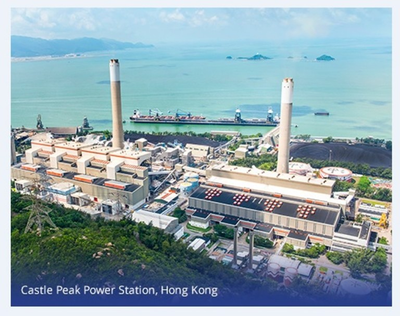Cleaner coal technology provides more efficient and accessible power generation in Asia – Out of the 1.3 billion people living without access to electricity globally, 700 million live in Asia. As an inexpensive and abundant fuel in steady supply, coal is a critical and unavoidable choice for electricity generation in the near and mid-term for electrification. In fact, coal is the dominant form of fuel for energy generation in China and India today. Globally, the share of coal in electricity generation in 2040 will vary from 31 to 40 percent, dependent on government policies, according to the International Energy Agency (IEA).

Yet coal-burning power plants are responsible for 44 percent of global carbon dioxide (CO2) emissions – the primary cause of global warming – and other greenhouse gases and pollutants including sulfur oxides (SOx), nitrogen oxides (NOx) and particulate matter (PM).
Competing realities, including the pressing needs for electrification and for less CO2 intensive energy, drive the continued use of coal and the evolution of technologies to make it cleaner and more efficient.
The challenge is significant for global leaders, particularly those in developing nations. In China, where coal is the current dominant fuel source, the government has pledged to halt the growth of its carbon dioxide emissions by 2030.
Clean coal technology may be the key, both globally and particularly in Asia, to reducing emissions while still meeting growing energy demands. To mitigate emissions, clean coal technologies are being adopted by more new facilities in recent years, or retrofitted to existing facilities. Clean coal technologies are based on a high-efficiency, low-emissions (HELE) concept. The aim of HELE technologies is twofold: to increase conversion efficiencies – enabling lower coal consumption for the same amount of electricity delivered – and to reduce all emissions including SOx , NOx , PM and CO2.
Recent clean coal technologies include supercritical and ultra-supercritical (USC) boilers, flue-gas desulfurisation, fluidised-bed combustion, integrated gasification combined cycle (IGCC), low nitrogen oxide burners, selective catalytic reduction (SCR) and electrostatic precipitators.
USC pulverised coal plants can reach efficiencies of 45 percent, reducing average carbon intensity to 740 grams of CO2 per kilowatt hour (gCO2/kWh)1. However, the carbon intensity level depends heavily on factors such as plant design, operating conditions and coal type. For low calorific value (LCV) coal available in Asia, carbon intensity of 800 gCO2/kWh is probably a more realistic estimation. Less commonly used and currently not as commercially viable, IGCC technology first converts coal into natural gas and then, using a Combined Cycle Gas Turbine (CCGT), generates electricity. An IGCC plant with 1500oC turbine inlet temperatures is able to achieve thermal efficiencies approaching 50 percent, bringing CO2 emissions down towards 670 gCO2/kWh1.
In the past decade, clean coal technologies to reduce emissions have been mainly adopted on a primarily voluntary basis. As the technology matures and air pollution continues to grow, cleaner coal will become more of a reality. In the mid to long-term, stricter regulations, through direct or indirect measures such as financing and carbon pricing mechanisms, are anticipated. These regulations are intended to stimulate energy efficiency improvement and carbon emissions reduction.
Several provinces in China, including Jiangsu and Henan, have implemented action plans to regulate air pollutant emissions. Across the country, new emissions standards are set to begin in 2020 that will require coal-fired generation units emit no more SOx, NOx and PM than natural gas-fired generation units. China has begun using more USC plants at coal mine mouths and using high-voltage transmission lines to deliver energy to cities.
Some existing coal plants have been retrofitted with flue-gas desulfurisation and selective catalytic reduction to reduce pollutions – making the emissions from the plant almost the same if not better than natural gas plants. In September 2015, China announced plans to implement the world’s largest national emissions trading system, set to go live in 2017.
Asia is still largely composed of developing nations and the need for affordable and reliable electricity supply dominates development agendas. To limit and reduce carbon emissions in the region, regulations, policy and public engagement are needed. Restrictions demanding Asian nations use only indigenous, low cost and low-quality coal should be avoided and incentives to encourage adoption of clean coal technologies should be considered and enforced. Read more..

